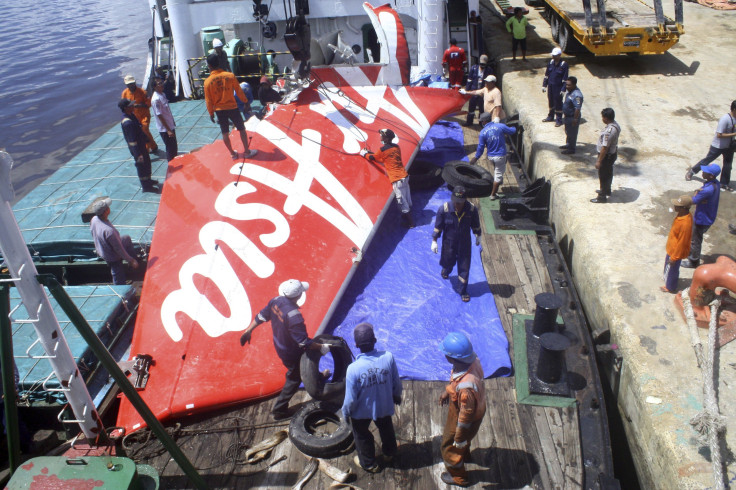AirAsia Flight 8501: Final Piece Of Plane's Fuselage Recovered From Java Sea

Indonesia’s search and rescue team has recovered the final part of AirAsia Flight 8501's fuselage from the Java Sea, officials said Saturday. The mangled wreckage, which is the largest part of the plane’s fuselage, was retrieved from the sea on Friday and has been loaded onto a ship.
Officials reportedly said that no bodies were found during the recovery operation. So far 103 bodies have been recovered from near the crash site. The Airbus A320-200, with 162 people on board, disappeared from radar screens during its flight from Surabaya, Indonesia, to Singapore, on Dec. 28 after the pilot requested for a change of course to avoid unfavorable weather conditions.
"We have retrieved on Friday the last and large part of the AirAsia fuselage with a wing still intact," Bambang Soelistyo, Indonesia’s search and rescue agency chief, told Agence France-Presse (AFP).
A final date for the recovery operation will be announced by the search agency after a meeting with the victims’ families, which is scheduled for next week, Soelistyo reportedly said.
Last month, the Indonesian military suspended the salvage operation after it failed to recover the plane's fuselage from the Java Sea. At the time, the military chief reportedly said that the debris was too fragile to be lifted to the surface.
Investigators have been analyzing the flight data recorders to determine the cause of the crash that killed all passengers and crew on board, making it the first fatal disaster of the low-cost carrier. Last week, Indonesia's transport ministry told AFP that a final report on the investigation, which is being conducted by the National Transportation Safety Committee (NTSC), will be released by August.
The NTSC has so far revealed few details about what caused the crash. Mardjono Siswosuwarno, head investigator for NTSC, told Reuters last month that the flight data recorders provided a "pretty clear picture" of the last moments of Flight 8501, adding that less experienced co-pilot Rémi-Emmanuel Plesel was flying the plane at the time of the crash. Based on radar data, the plane made an abnormally steep climb before stalling and crashing into the Java Sea, Ignasius Jonan, Indonesia's transport minister, said last month.
© Copyright IBTimes 2025. All rights reserved.





















